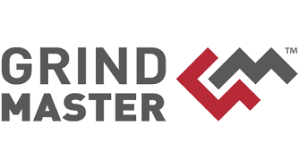


The way you design, produce, and package consumer goods contributes to your success in the market. However, traditional design and prototyping processes are costly and time-consuming. Competitive edge over competitors is a crucial factor for any company, and they spend billions and billions and billions for this advantage. Because of this, 3D printing for packaging and especially into the consumer goods industry has increased in popularity. Companies are quickly learning that 3D printing will allow them to produce more accurate prototypes faster and cheaper.
1. Saves Time – 3D printing makes it possible to produce prototypes much faster than traditional manufacturing techniques, like CNC.
2. Saves Money – Fewer time results in less money expenditure, and a perfect design gives less sunk cost to the company instead of wasting money in trial and error
3. Unimaginable Prototypes – Highly detailed, accurate to micro levels, and smooth scale models printed by 3D printing technology is often used to showcase design ideas. These models also help in situations where CAD models are not sufficient for identifying design issues.
4. Ergonomic Design – Ergonomics aims to make the design of the packaging with human limitations. It is a hands-down winner. 3D printing allows you to apply ergonomic principles to packaging design.
5. Design that Sells – New advancements in 3D printing technology allow companies to work faster, create more effective prototypes, and test packaging designs that grab consumers’ interest and establish brand identity.
6. Mass Customization – 3D printing technology will enable faster manufacturing in a quicker time and mass customization at a moment’s notice
7. Tools Manufacturing – The production of tools and injection moulds can also benefit from 3D printing. As per EY, thirty-nine percent of consumer products companies sees the value of 3D-printed tools in enhancing traditional manufacturing,
8. Sustainability – 3D printing can significantly reduce material waste, thereby making the manufacturing process more sustainable.
Toly:
Development times for these high-end packages have been significantly reduced at Toly. ” By 3D printing our prototypes in-house, they were saving months versus sending them to get CNC’d. Every CNC prototype took up to 3 weeks, and they also needed multiple iterations, increasing the timings very high. The third-party outsourced models cost 100 euros each to produce. However, to 3D print, an in-house model cost about 25 euros only. Now they were able to 3D print prototypes overnight and test them the very next day. They are creating 100 new product designs each year and are literally saving 10,000s of euros annually with 3D printing technology.

Unilever:
Unilever accelerated consumer product prototyping by 40% with 3D printed injection molds. By implementing 3D printed injection molding tools, the company can produce prototype parts in the final material directly for functional and consumer testing, significantly faster than traditional tooling methods. With 3D printing technology, they can now apply design iterations to the mold within a matter of hours.

Often, the sweet spot for additive manufacturing is in low-volume, high value, long lead-time parts. Why? 3D printing reduces lead times and allows you to avoid the high up-front costs of traditional manufacturing: supply chain, tooling, and setup.
On the cost side, 3D printing often eliminates tooling and setup costs associated with traditional manufacturing. These lowered fixed costs mean that production at low volumes becomes economically viable. The graph below shows visually why this happens:

There’s a time benefit too: Since additive manufacturing doesn’t require setup or tooling, 3D-printed parts can often be produced with lead times in days versus weeks or months for traditional manufacturing.
Smart Cups is a new age start-up from California that ships empty biodegradable plastic cups embedded with polycapsule flavors created with additive manufacturing. When a user adds water to these cups, it magically turns into flavourful energy drinks. Scientifically, the 3D printed capsules embedded in the cup reacts with the water to produce the drink.
The product leads to a sharp reduction in storage and transportation requirements making is one-of-its-kind in its category. The manufacturing process is also completely waterless.

Pepsi: 3D printing helps Pepsi to advance packaging design
Pepsi is known for its creativity. Recently, Pepsi wanted to develop 250 intricate masks as quickly as possible for its marketing strategy. However, Pepsi knew that creating molds would be too expensive by traditional methodology. 3D printing provided an ideal solution, looking at its design flexibility and highly economic low-volume production benefits.

References:
https://www.cati.com/blog/2018/10/3d-printing-packaging-consumer-goods-custom-designs-lower-costs/
https://amfg.ai/2018/06/08/3d-printing-consumer-goods-industry-5-benefits/
http://dcp-uk.co.uk/10-key-reasons-why-packaging-design-is-so-important/
https://packagingeurope.com/eco-design-for-high-end-packaging-using-multijet-3d-printing/
https://www.stratasys.com/explore/blog/2015/unilever-3d-printed-injection-molds
https://www.packagingconnections.com/blog-entry/3d-printing-packaging.htm
https://amfg.ai/2020/08/17/how-3d-printing-transforms-the-food-and-beverage-industry/
“One of the main applications they use 3D printing for is custom workpiece holders which mount on the machine conveyors.”

We Help You With :

3D Printing is set to revolutionaize the way several industries work, from Medicine to Space Exploration to Education.
Learning and adopting 3D Prinring in your field may just be the Next Big Thing in your industry or workplace